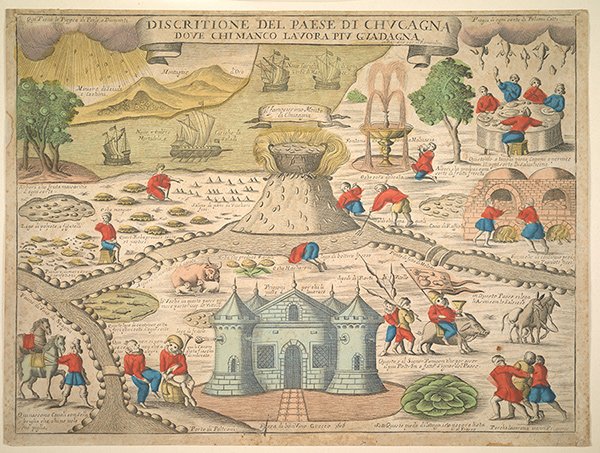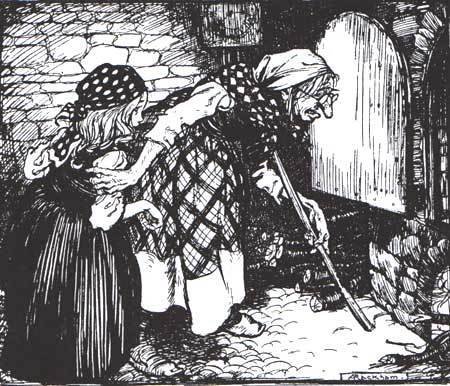’Hansel and Gretel’. How does this well-known story connect with other popular creations present in European folklore and what are its origins?Hello, dear @adsactly readers! In today’s post I’d like you to join me in another trip to the world of fairy tales, during which we’re going to examine a story I’m sure most of you are familiar with,
’Hansel and Gretel’ was first published by the famous Grimm brothers in 1812 and tells the story of a brother and sister from a poor family abandoned by their parents in the woods, where they end up in the house of a witch who wants to eat them. For the modern reader, the idea of losing track of their children in any sort of place is terrifying, let alone purposefully abandoning them in the wilderness. Who would do such a thing? Desperate, hungry people apparently did that when they could not afford to feed them.
Experts believe this rather gruesome story originates in the Middle Ages, dating back to the Great Famine of 1315-1317, during which it is estimated between 10-25% of the population died.
The onset of the Great Famine coincided with the end of the Medieval Warm Period, at the beginning of the 14th century. In the last decades before 1300, Europe benefited from fair weather, which brought good crops and a subsequent explosion in population. However, between 1310-1330, the whole European continent from the British Isles to Russia and down to Southern Italy, was under a prolonged bad weather spell, characterized by harsh winters and cold, rainy summers. The worst part started in the spring of 1315, with heavy rains that continued into an unusually cold summer, which led to widespread crop failures. Most affected, of course, were the peasants, that is some 95% of the population, who had no reserve food supplies, like the upper class and the Church. Sometimes, even the nobles had troubles finding food. An English chronicle details an incident that occurred in August 1315, when King Edward II of England stooped in St.Albans, and could not find any bread for his entourage. Imagine what the peasants went through at a time even the king could not find adequate food. As a result, families resorted to abandoning their children to fend for themselves, with little hope of survival, but probably better than watching them starve to death. In some instances, the elderly voluntarily stopped eating, leaving more food for the younger generations. The witch in the story wanting to eat the children could be a reference to the rumors about instances of cannibalism taking place during the famine. While there are no definite proofs this actually happened, it must be said that there were numerous stories of cannibalism taking place as recently as last century, during the Great Famine in the Ukraine, between 1932-1933. During that period, some 2500 people were convicted for acts of cannibalism, so we have every reason to believe a similar thing happened in the 1300s.
At the same time, American folklorist Edward Wajda proposed a theory that the abandoned children motif present in many cultures is a remnant of a coming-of-age story (and ritual) dating back to a Proto-Indo-European society. Indeed, many primitive cultures had coming-of-age rituals involving children left to face the dangers of the wilderness to prove their maturity.
A variant of this rite of passage can be found in a group of stories about children outwitting man-eating ogres, which can be found in many European cultures, particularly in the Baltic region. As harsh as is may sound, those children who could not defeat the dangers (the witch or the ogre) where deemed unfit to survive.
In a French version of the story, called ‘The Lost Children’, the brother and sister stumble into a house inhabited by the Devil and his wife, the nature of the danger the children have to face being changed in accordance with the Christian faith. The Devil decides to lock them in the barn until they fatten up and, for a while, the boy manages to trick him presenting for examination a rat’s tail instead of his finger. When the Devils finds out, he decides to slaughter the children, but they manage to kill the woman and escape. Obviously, they cannot kill the Devil himself.
The story of ‘Hansel and Gretel’ is very similar to a traditional English children’s tale called ‘Babes in the Woods’, also the subject of a popular pantomime. The two children are left in the care of their uncle after the death of their parents, but the man abandons them in the woods, where they die. The tale is adapted to include elements of the Christian doctrine and the cruel uncle pays dearly for his sin.
Another interesting element in the story of Hansel and Gretel is the witch’s house, made of gingerbread, candy and sugar. Such houses are mentioned in Medieval poems and manuscripts referring to the mythical Land of Cockayne, an imaginary place where people wanted for nothing. In this land of plenty houses are made of confectionery, roasted pigs walk the street with carving knives conveniently stuck in their backs, while grilled geese fly directly into one’s mouth. It is also a place where sex is readily available and people enjoy eternal youth. Tales about this mythical place can be found in Ireland, England, as well as France and Italy.

Hand-colored Itailian engraving depicting the abundance in the Land of Cockayne
source
The Land of Cockayne was a "medieval peasant’s dream, offering relief from backbreaking labor and the daily struggle for meager food." A reference to this mythical place is only fitting in a story which starts by exposing the dire circumstances of a poor family on the brink of starvation.
Finally, it must be mentioned that in the original version published by Jacob and Wilhelm Grimm those responsible for abandoning the children in the woods were their biological parents. Later on, the mother is replaced by a step-mother, to explain an act of cruelty unthinkable of a mother. In many variants of the story, both the witch and the step-mother die at the end, signifying they are both equally evil. The negative portrayal of the step-mother in European folklore has been amply discussed in a previous post of this series and it is easy to see how the cruel behavior is explained not necessarily by an evil nature, but by the harsh economic conditions of early European civilization.
Post authored by @ladyrebecca.
References: 1, 2, 3.
Click on the coin to join our Discord Chat

Witness proposal is here:
Go To Steem Witness Page
In the bottom of the page type: adsactly-witness and press vote.

Use small letters and no "@" sign. Or, click here to vote directly!
Thank you!




As always, an excellent post! Complete, pleasant and very interesting. I didn't know the possible origin of this children's story and some of the versions it has in other countries. For a Venezuelan child, this story can be very real, since every day there are more Venezuelan families who abandon or give away their children because they do not have the possibilities to feed and educate them. Perhaps at the end of all the nightmare we are living through, there will be new horror stories that will be told like fairy tales. It is unbelievable when reality overcomes fiction. Thank you for sharing, @ladyrebecca.
For a long time the so-called "fairy tales" have been assumed to be the product of fantasy alone. We know that their origin comes from the compilation made by, among others, the Grimm brothers of the Germanic oral betrayal. On this basis, it is not difficult to understand that in their genealogy (or archaeology) is the real life (crude and terrible) of the peoples who created them. Already the psychologist and researcher Bruno Betthelheim, in his study on "fairy tales" in the 70s of the twentieth century, had pointed in that direction.
Your post, @ladyrebecca, offers us a good look at this emblematic tale in universal children's literature. Thank you and greetings.
The drama of Hansel and Gretel is a never-ending tragedy in some places even today. While in some parts of the world children have resources and care to spare, in others it is still the Middle Ages.
Sample of report of Venezuelan mothers leaving their children at orphanages:
https://www.washingtonpost.com/world/the_americas/venezuelas-economy-is-so-bad-parents-are-leaving-their-children-at-orphanages/2018/02/12/8021d180-0545-11e8-aa61-f3391373867e_story.html?utm_term=.83ffa99d5b12
Report of mothers abandoning their children, period!
https://www.smh.com.au/world/south-america/we-are-going-hungry-here-venezuela-s-tale-of-abandoned-needy-children-and-their-parents-20180713-p4zrdk.html
This is probably, after Little Red RidingHood the most widely spread story in world folklore. The reason, as you syggest, being the shared world experience of hunger and pestilence, which forces people, especailly parents, to do the unthinkable.